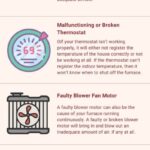To install a generator interlock kit, first, turn off your main breaker. Then, attach the interlock plate to your breaker panel.
Navigating through power outages with ease becomes a reality with the installation of a generator interlock kit. This simple yet effective solution allows homeowners to safely connect a portable generator to their home’s electrical system. The beauty of a generator interlock kit lies in its ability to provide a fail-safe mechanism, ensuring that the main breaker and generator cannot be on at the same time.
This not only protects your home’s electrical system but also the utility workers repairing the grid. By enabling a seamless switch between power sources, these kits offer peace of mind during unpredictable weather events or emergencies. With safety and convenience at its core, installing a generator interlock kit is a smart move for any homeowner looking to enhance their home’s resilience to power interruptions.
Introduction To Generator Interlock Kits
Understanding generator interlock kits is crucial for safe power backup installation. These kits allow for a safe switch between power sources. Users can switch from utility to generator power during outages. This avoids dangerous backfeeding scenarios.
Purpose Of An Interlock Kit
Generator interlock kits maintain power flow control. They ensure only one power source is active. This prevents utility and generator power from mixing. Users install them on electrical panels for seamless power source transition.
Safety Considerations
Installing interlock kits involves electrical knowledge. Incorrect installation can lead to fire hazards or electrocution. Always consult with a licensed electrician. Comply with local codes and regulations for safe installation.

Credit: m.youtube.com
Assessing Your Electrical Panel
Before installing a generator interlock kit, you must assess your electrical panel. This step ensures safety and compatibility. It also helps avoid potential damage to your electrical system.
Compatibility With Interlock Kits
First, check if your panel accepts an interlock kit. Not all panels do.
- Manufacturer: Refer to the panel’s brand.
- Model: Look for the model number inside the door.
- Type: Determine the panel type – some are specific.
Visit the manufacturer’s website or contact them. They provide information on compatible interlock kits.
Identifying Breaker Types
Breakers vary by size and function. Knowing your type is key.
- Open your panel’s door.
- Examine the breakers.
- Look for labels or markings.
Standard breakers have one switch. Tandem breakers have two. GFCI and AFCI breakers have test buttons.
Take note: Your interlock kit must match your breaker type.
Following these steps prepares you for a smooth installation. It helps ensure your interlock kit works well with your electrical panel.
Tools And Materials Needed
Before installing a generator interlock kit, gather the right tools and materials. This ensures a smooth and safe installation process. Below, find the essentials for your project.
List Of Essential Tools
- Drill – To make necessary holes for mounting.
- Screwdrivers – Various sizes for tightening screws.
- Wire strippers – For preparing electrical wires.
- Wrench set – To secure bolts and nuts.
- Pliers – For gripping and bending materials.
- Tape measure – To ensure accurate placement.
- Utility knife – For cutting insulation or wires.
- Torque wrench – To apply specific torque to screws.
- Flashlight – To illuminate work areas.
Safety Equipment
- Insulated gloves – Protects hands from electric shock.
- Safety glasses – Shields eyes from debris.
- Ear protection – If working in noisy environments.
- Non-conductive shoes – To prevent electrical hazards.
Pre-installation Safety Checks
Before installing a generator interlock kit, safety is key. We will discuss vital pre-installation safety checks. These steps ensure a safe setup process. Let’s dive into each critical step.
Turning Off Power
- Locate your main circuit breaker. It’s in your electrical panel.
- Switch it to the “Off” position. This action cuts power to your house.
- Confirm all household devices are off. Safety first!
Verifying Power Disconnection
- Grab a non-contact voltage tester. It checks for live wires.
- Test all circuits in the electrical panel. Make sure no power is present.
- If the tester beeps or lights up, recheck the main breaker. Ensure it’s truly off.
Remember, working with electricity requires caution. Always wear protective gear. Gloves and safety glasses are essential. These steps protect you from electrical hazards. They are the foundation for a safe generator interlock kit installation.
Mounting The Interlock Kit
Now, let’s talk about Mounting the Interlock Kit. This part is key to safely install your generator interlock kit. We’ll cover two main steps: Positioning the Interlock Plate and Securing the Kit. Follow these steps carefully to ensure a safe setup.
Positioning The Interlock Plate
First, you need to place the interlock plate correctly. This plate prevents the main and generator breakers from being on at the same time. Here’s how to do it:
- Turn off the main breaker to ensure safety.
- Open your panel and find the spot for the interlock plate.
- Align the interlock plate with the panel cover slots.
Make sure the plate sits perfectly. It should not move or wiggle.
Securing The Kit
After positioning, you must secure the kit. This step is crucial for safety. Here’s how:
- Use the screws provided with your kit.
- Attach the interlock plate to the panel cover firmly.
- Double-check all screws are tight and secure.
Once secured, your interlock kit is almost ready. Remember, a well-secured kit means a safer home during power outages.
Connecting Generator To The Panel
Connecting a generator to your home’s electrical panel is crucial for safe operation. An interlock kit ensures power flows from either the grid or generator, not both. This prevents dangerous backfeed. Let’s install the kit and connect the generator.
Installing A New Breaker
- Turn off the main breaker for safety.
- Locate your panel’s neutral bar and ground bar.
- Choose a spot for the new breaker. It should be near the top right.
- Install the breaker by snapping it into place.
- Ensure the breaker fits snugly without loose movements.
Wiring The Generator Inlet
Mount the generator inlet box on the exterior of your home. It should be near the electrical panel. Make sure it’s accessible for the generator cord.
| Step | Action |
|---|---|
| 1 | Drill a hole to run wires from the inlet box to the panel. |
| 2 | Feed wires through the hole and into the panel. |
| 3 | Connect wires to the new breaker. Red and black go to the breaker terminals. White connects to the neutral bar. Green goes to the ground bar. |
| 4 | At the inlet box, connect wires to corresponding terminals. |
| 5 | Test connections with a multimeter for security. |
With these steps, your generator is now safely wired to your electrical panel. Remember to always follow local codes and regulations.
Finalizing The Installation
After securing all components, it’s time to finalize your generator interlock kit installation. This crucial stage ensures safety and functionality. It involves a detailed review of connections and a thorough test of the interlock mechanism.
Double-checking Connections
First, confirm every connection is tight and secure. Use a torque wrench to ensure all screws and bolts meet manufacturer specifications. Look for any loose wires or terminals. A secure connection is vital for safety and performance.
- Inspect all circuit breakers.
- Verify the generator breaker position.
- Check the tightness of all connections.
Testing The Interlock Mechanism
Now, test the interlock kit’s functionality. This step ensures the switch between power sources is safe and reliable. Activate the generator circuit and attempt to turn on the main breaker. The interlock kit should block this action.
- Turn off the main breaker.
- Switch on the generator breaker.
- Attempt to engage the main breaker.
Observe the interlock kit in action. It must prevent the main and generator breakers from being on simultaneously. This feature protects against back-feeding, which can be dangerous.
If the interlock mechanism operates as expected, your installation is successful. Label your electrical panel accordingly to guide future users. Your generator is now ready for safe operation during power outages. Remember, regular maintenance keeps your system reliable.

Credit: www.tejaselectric.com
Safety And Maintenance Tips
Installing a generator interlock kit is a smart move for safe power backup. But, it’s crucial to maintain your setup. Regular safety checks and maintenance ensure the system works when you need it most. Follow these tips to keep your generator interlock kit in top condition.
Routine Checks
Consistent inspections can prevent many issues. Here’s what to include in your routine checks:
- Inspect the kit for loose parts or damage.
- Check that the interlock plate moves smoothly.
- Ensure all connections are tight and corrosion-free.
- Test the generator’s operation regularly.
Keep a log of these checks. This habit helps you track the kit’s condition over time.
When To Consult A Professional
Sometimes, an expert’s help is necessary. Call a professional if you notice:
- Strange noises or smells when the generator runs.
- Any signs of electrical issues, like flickering lights.
- Difficulty engaging the interlock kit.
Professional technicians can address complex problems safely. They keep your system reliable and extend its lifespan.

Credit: www.nooutage.com
Frequently Asked Questions
What Is A Generator Interlock Kit?
A generator interlock kit is a device that safely connects a generator to a home’s electrical panel, preventing both sources from running simultaneously.
Can I Install An Interlock Kit Myself?
Yes, with proper electrical knowledge and adherence to local codes and safety standards, a homeowner can install an interlock kit; however, professional installation is recommended.
What Tools Are Needed For Interlock Kit Installation?
Typical tools include a screwdriver, drill, torque wrench, and electrical tape. Always check the specific kit’s instructions for any additional tools.
How Long Does Interlock Kit Installation Take?
Installation time varies, but it typically takes a few hours to complete, assuming all tools and equipment are prepared beforehand.
Is An Interlock Kit Legal Everywhere?
Legality depends on local regulations. Always verify with local building codes and utility companies before installing an interlock kit.
Conclusion
Installing a generator interlock kit can be a straightforward process with the right tools and guidance. Ensure you follow each step meticulously for safety and efficiency. Remember, proper installation is crucial for reliable backup power during outages. Stay empowered and prepared by mastering this essential skill.




